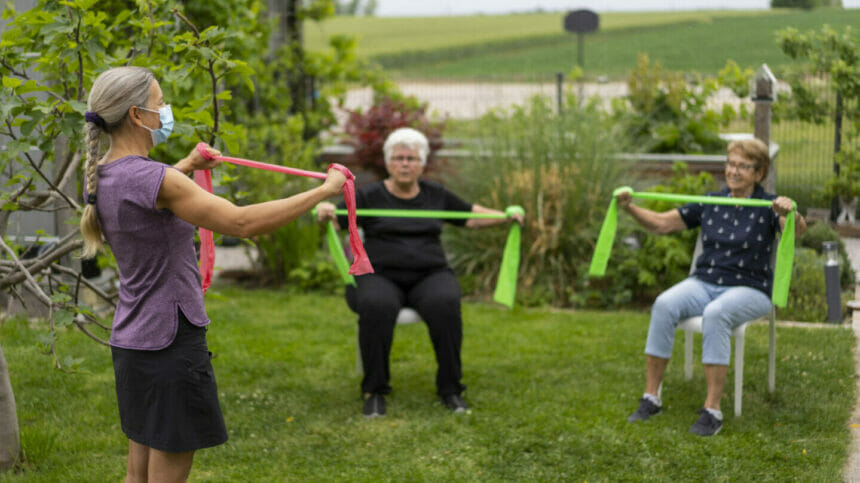
A new report identifies ways various long-term care settings can use a residential care model to improve health outcomes and healthy living in older adults. The Center for Discovery and The John A. Hartford Foundation released the report, entitled “The Center for Discovery Program Evaluation: How the HealthE6® Model Can Support Healthy Aging.”
The Center for Discovery provides healthcare and education services for children and adults with complex conditions, medical frailties and autism spectrum disorders. The center’s HealthE6® Model outlines six pillars related to the health and functioning of individuals with autism and other disabilities.
The John A. Harford Foundation engaged the national research organization NORC at the University of Chicago to evaluate whether components of the model could be used in the care of older adults in a wide range of care settings.
The NORC conducted 20 hours of interviews, an on-site visit, close document reviews and an assessment of outcomes provided by The Center for Discovery. Through their research, NORC identified five core components of the model that could be piloted in the care of older adults in other care settings in the pursuit of healthy aging:
- Evaluation – Initial and ongoing assessment of the individual’s physical and mental well-being
- Schedule – A schedule that includes physical activity and a consistent sleep routine
- Socialization – Meaningful socialization with staff, friends and family
- Nutrition – A nourishing whole food-based diet
- Environment: An adaptive environment that allows for safe, independent engagement
“The U.S. has a quickly growing population of older adults and substandard options for residential care,” Dianne Munevar, senior director of Health Care Strategy at NORC, said in a news release. “The Center for Discovery has developed a model of residential care that could serve as an example of how seniors can live independently and with integrity.
“Our evaluation report includes tangible yet impactful solutions that can be implemented in nursing homes and assisted living centers — without significant financial resources or workforce burden,” she added.




